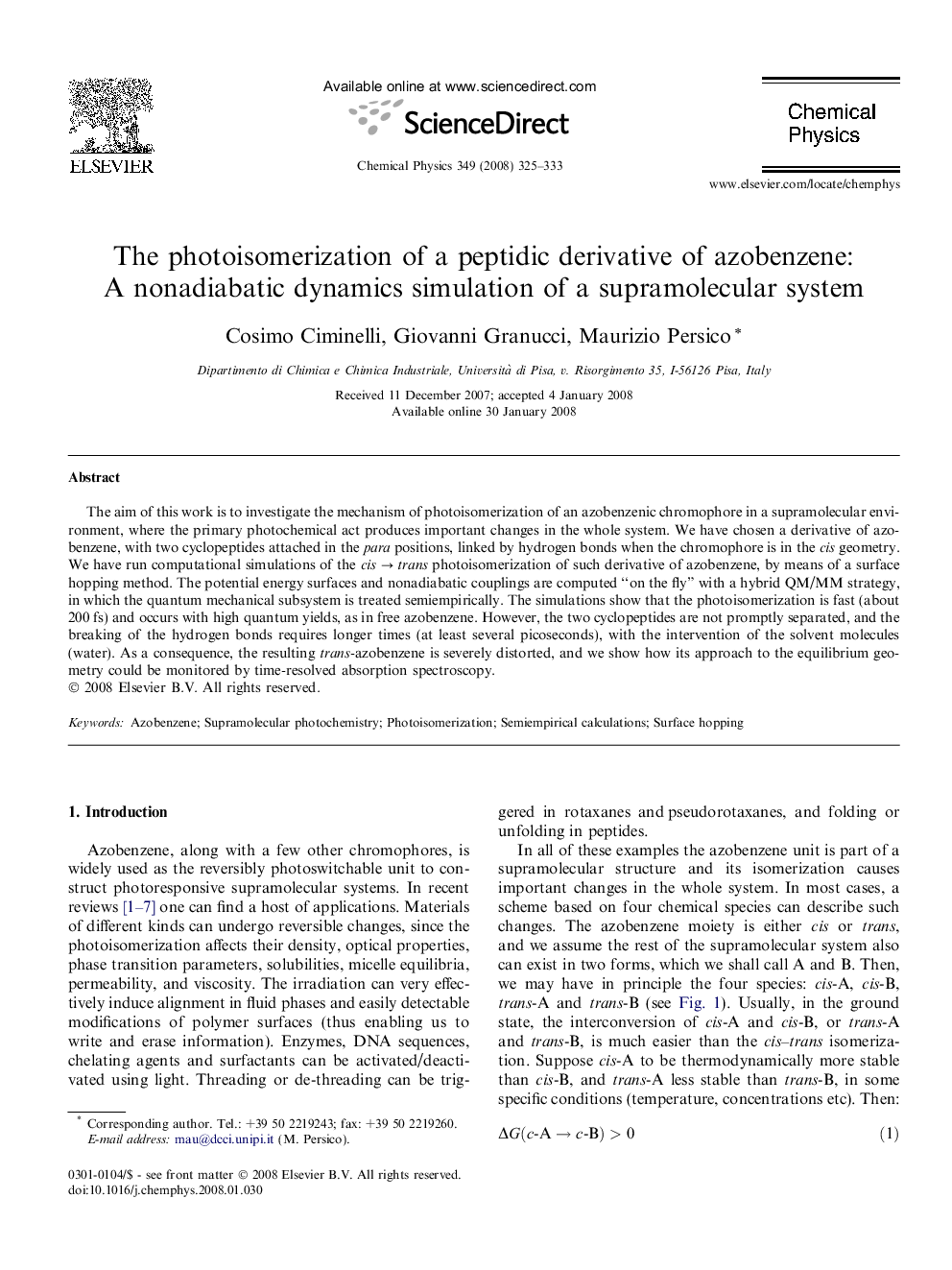| Article ID | Journal | Published Year | Pages | File Type |
|---|---|---|---|---|
| 5375962 | Chemical Physics | 2008 | 9 Pages |
Abstract
The aim of this work is to investigate the mechanism of photoisomerization of an azobenzenic chromophore in a supramolecular environment, where the primary photochemical act produces important changes in the whole system. We have chosen a derivative of azobenzene, with two cyclopeptides attached in the para positions, linked by hydrogen bonds when the chromophore is in the cis geometry. We have run computational simulations of the cis â trans photoisomerization of such derivative of azobenzene, by means of a surface hopping method. The potential energy surfaces and nonadiabatic couplings are computed “on the fly” with a hybrid QM/MM strategy, in which the quantum mechanical subsystem is treated semiempirically. The simulations show that the photoisomerization is fast (about 200 fs) and occurs with high quantum yields, as in free azobenzene. However, the two cyclopeptides are not promptly separated, and the breaking of the hydrogen bonds requires longer times (at least several picoseconds), with the intervention of the solvent molecules (water). As a consequence, the resulting trans-azobenzene is severely distorted, and we show how its approach to the equilibrium geometry could be monitored by time-resolved absorption spectroscopy.
Keywords
Related Topics
Physical Sciences and Engineering
Chemistry
Physical and Theoretical Chemistry
Authors
Cosimo Ciminelli, Giovanni Granucci, Maurizio Persico,
